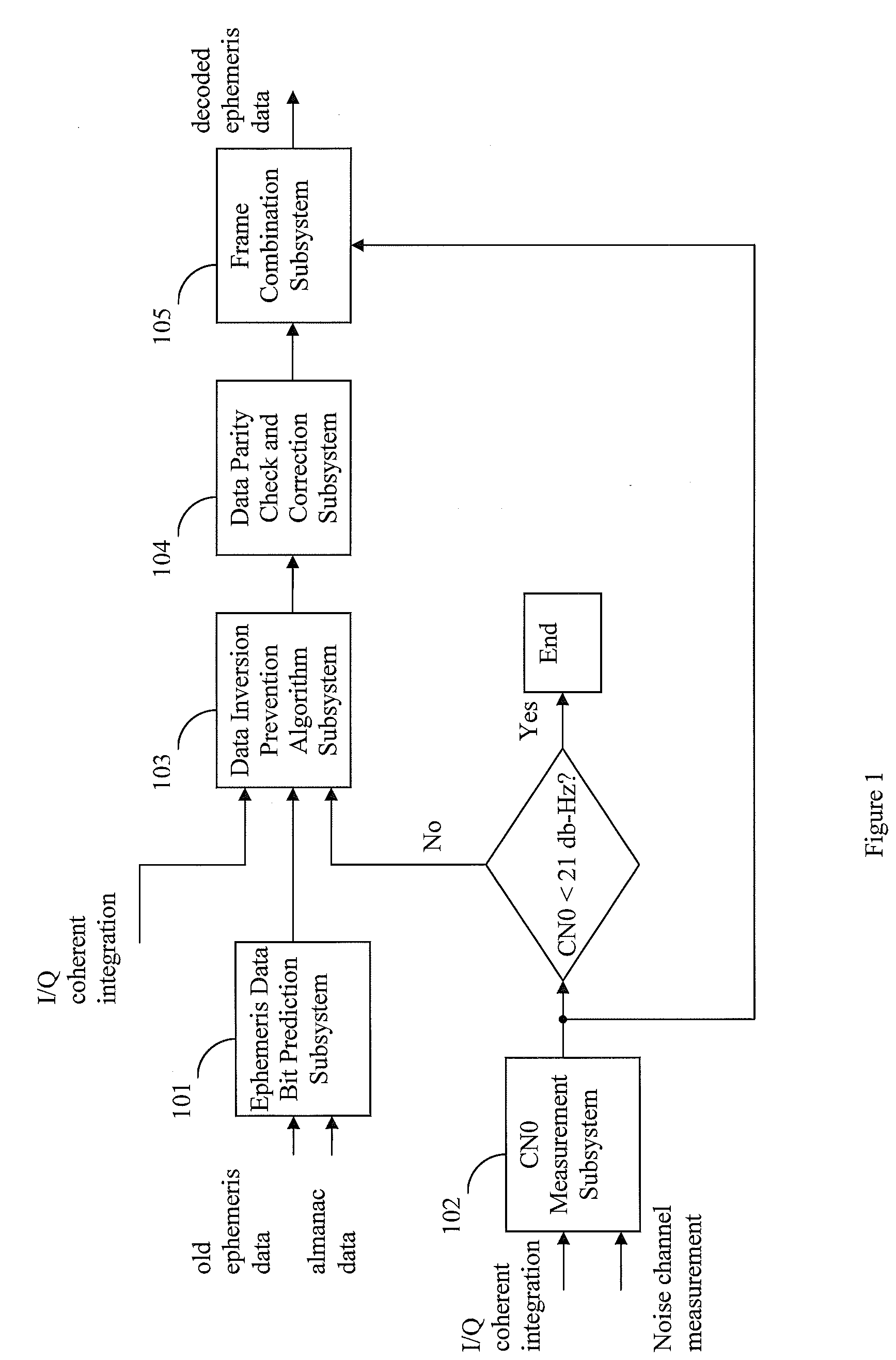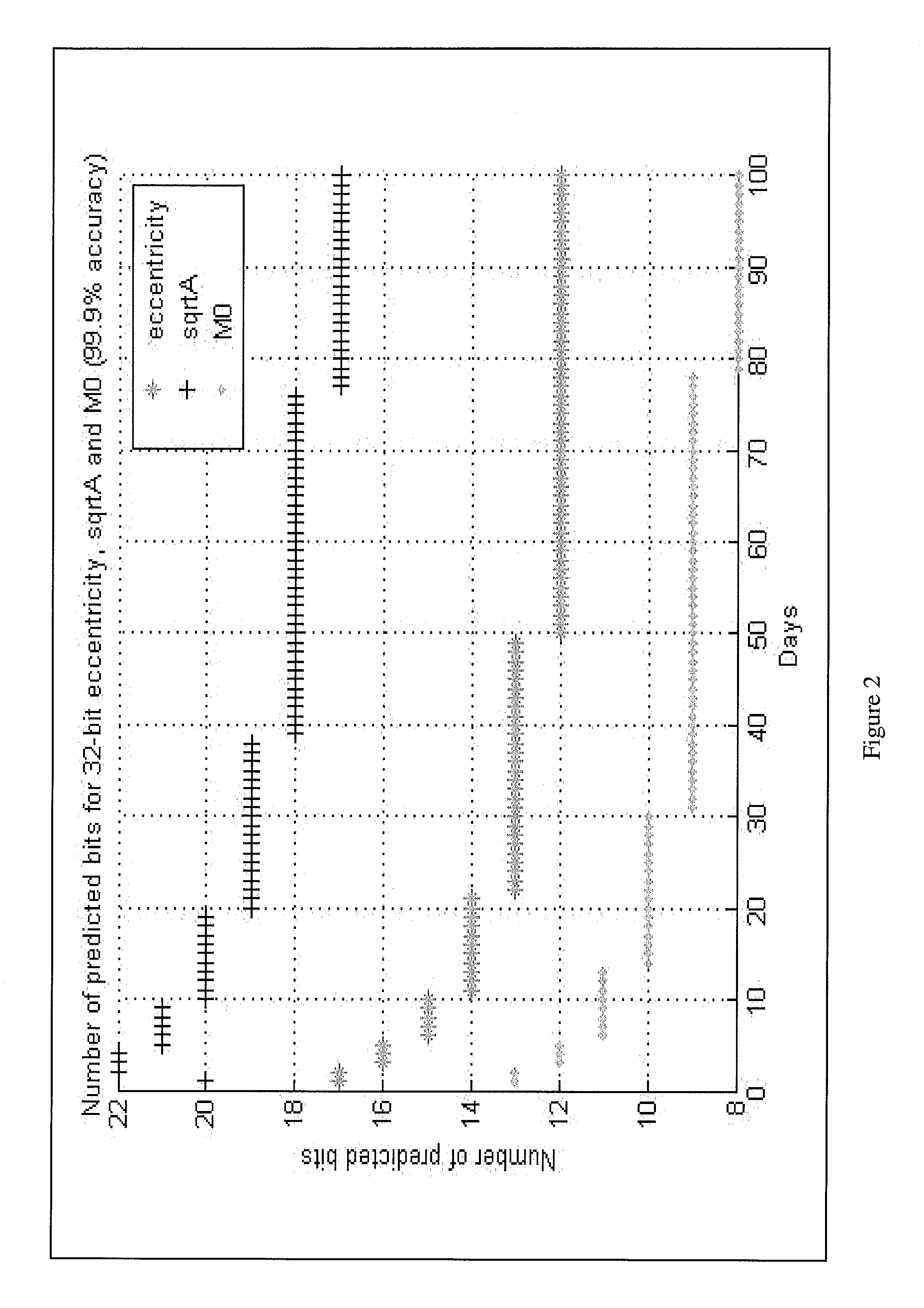System and method for enhanced data decode in a GPS receiver
a satellite navigation and data decoding technology, applied in the field of enhanced data decoding in satellite navigation receivers, can solve the problems of low signal strength conditions, inability to reliably operate below a cn0 of 26 db-hz, and the correct demodulation or decoding of ephemeris, so as to improve the sensitivity of ephemeris data decoding, and improve the probability of successful decoding
- Summary
- Abstract
- Description
- Claims
- Application Information
AI Technical Summary
Benefits of technology
Problems solved by technology
Method used
Image
Examples
Embodiment Construction
[0012]Systems and methods are disclosed herein to reliably demodulate and decode ephemeris data from a GPS satellite down to a CN0 of 23 dB-Hz. GPS data is organized into a GPS data frame of 50 words. Each data frame is further divided into 5 subframes of 10 words each. The GPS ephemeris data is encapsulated in 19 words of the 50 words data frame and consists of 3 words in subframe 1, 8 words in subframe 2, and 8 words in subframe 3. The ephemeris data is continuously transmitted by each satellite at the GPS data rate of 50 bits per second. Simulations with one or more embodiments of the present disclosure have shown a 95% probability of successfully decoding all bits in the 19 ephemeris data words of a GPS frame given two frames of data at a CN0 of 23 dB-Hz. It is assumed that the ephemeris data does not change for the two frames of data used for data decode. The probability of successful decoding can also be characterized in terms of word error rate (WER), detected word error rate...
PUM
 Login to View More
Login to View More Abstract
Description
Claims
Application Information
 Login to View More
Login to View More - R&D
- Intellectual Property
- Life Sciences
- Materials
- Tech Scout
- Unparalleled Data Quality
- Higher Quality Content
- 60% Fewer Hallucinations
Browse by: Latest US Patents, China's latest patents, Technical Efficacy Thesaurus, Application Domain, Technology Topic, Popular Technical Reports.
© 2025 PatSnap. All rights reserved.Legal|Privacy policy|Modern Slavery Act Transparency Statement|Sitemap|About US| Contact US: help@patsnap.com



